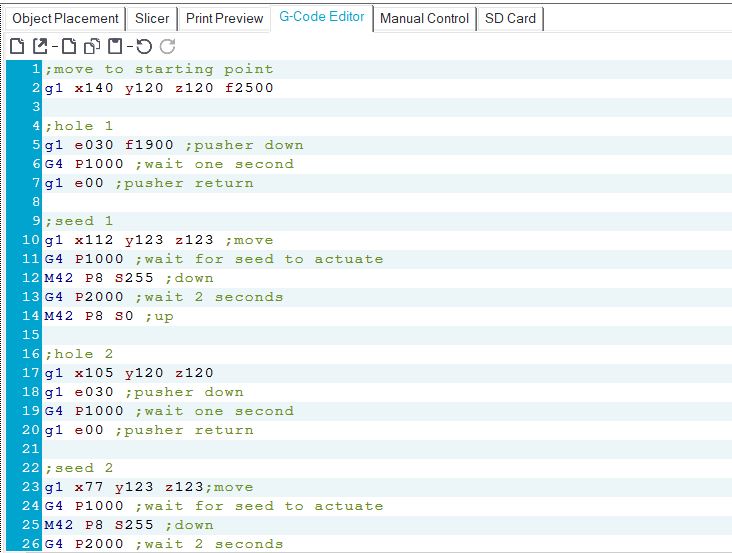Overview:
Developed a semi-automated gantry system capable of planting seeds in a grid layout using a combination of linear motion, soil displacement, and seed dispensing mechanisms. The system operates with three linear drives, a pulley system, and two actuators:
-
A rack-and-pinion tool to dig planting holes
-
A 3D-printed seed dispenser, actuated by a solenoid
Required tools and technologies: SOLIDWORKS, 3D Printing, Laser Cutting, Drill Presses, Stepper & Servo Motors, G-Code, Solenoids.
Your Title Goes Here
Design:
-
Collaboratively designed all mechanical components in SOLIDWORKS.
-
I was responsible for designing and printing the middle slider components, which accurately aligned the belt and aluminum bars using press fits.
-
My teammate designed the end mounts for pulley and bar connections.
-
For the actuator, we each prototyped a solution:
-
I proposed a hopper-style dispenser with a solenoid-driven gate mechanism at the base.
-
My teammate designed a mountable system for a commercial seed dispenser, also actuated by solenoid.
-
Both solutions were evaluated for final implementation.
-
Fabrication:
-
Most parts were 3D printed, with minimal manual machining (e.g., using a drill press to correct hole dimensions).
-
Assembly precision was critical, especially due to tolerance issues from 3D printing such as material warping and fit inaccuracies.
-
Some components required post-processing through filing or reprinting for improved fit and stability.

Programming & Automation:
-
Used G-Code in Repetier to control all three stepper motors (X, Y, Z axes).
-
Enabled synchronized or independent motion across the gantry for precise positioning.
-
The rack and pinion actuator handled vertical movement to punch holes, while the solenoid-actuated seed dispenser provided a half-degree of freedom on the Z-axis.
-
Created an automated sequence to:
-
Move to a planting location
-
Dig a hole using the actuator
-
Position the seed hopper
-
Dispense a seed
-
Repeat for a 2-row by 4-column planting pattern
-
Return to home position and terminate
-
See video demonstration of project here: https://drive.google.com/drive/u/3/folders/1ADtxkjpBTxIGR8mxQMStaJB8VEgogqoY
